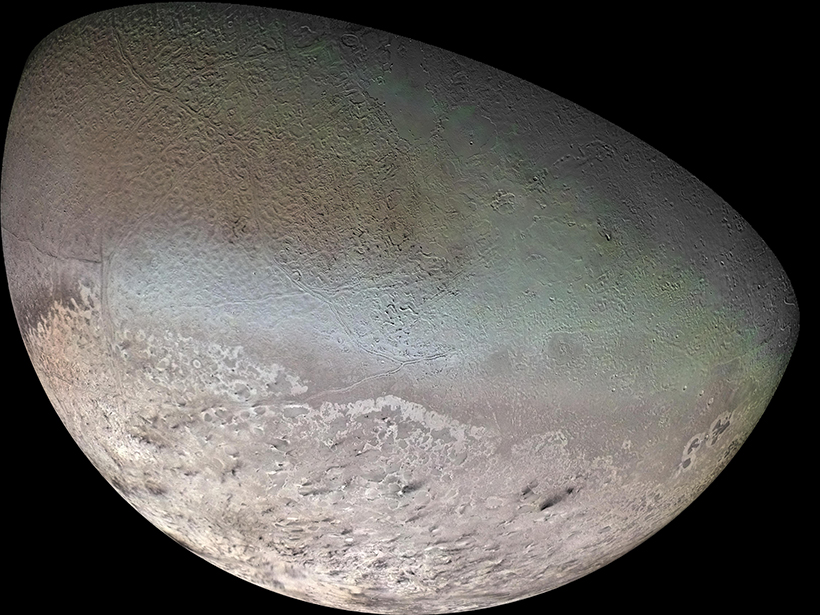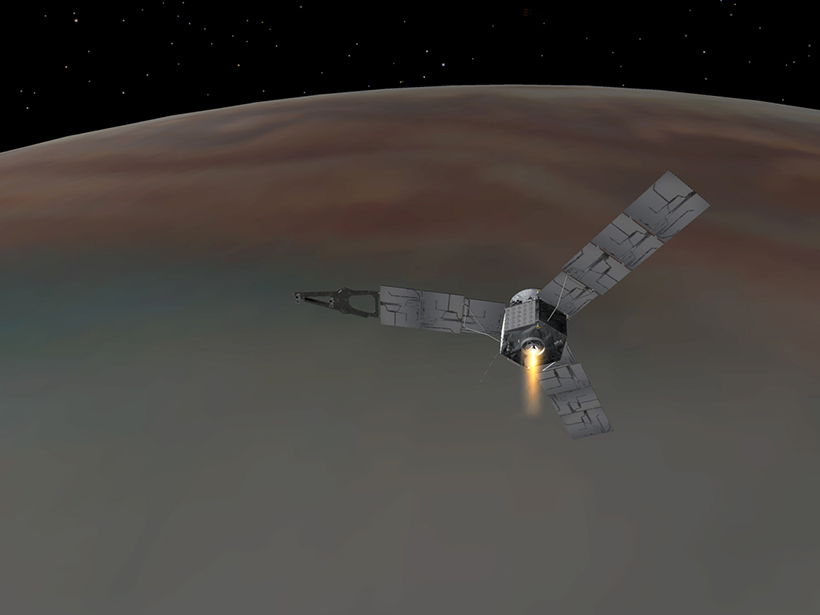Catastrophic lithospheric recycling is unlikely to be the cause of Venus’s young surface from mantle convection models constrained by offset between the center of mass and center of shape of planet.
planetary interiors
New Juno Data Reveal Four Key Secrets of Jupiter
Deep clouds, polar storms, lopsided gravity, and a uniformly rotating interior demonstrate that the gas giant plays by different rules than Earth.
Time, Tides, and Wandering Poles
Models of Neptune’s moon Triton reveal curious behavior in how tidal forces and mass anomalies cause the poles to reorient their location.
Close Encounter with Jupiter
First results from the Juno mission shed new light on Jupiter’s atmosphere, gravity, magnetic field, aurora, history, and more.
Martian Mantle Models Pave the Way for NASA's InSight Lander
The most detailed simulations to date of how heat flows through Mars's interior are good news for the upcoming lander and will help scientists interpret its data.
Veronique Dehant Receives 2016 Charles A. Whitten Medal
Veronique Dehant was awarded the 2016 Charles A. Whitten Medal at the American Geophysical Union Fall Meeting Honors Ceremony, held on 14 December 2016 in San Francisco, Calif. The medal is for "outstanding achievement in research on the form and dynamics of the Earth and planets."
Freezing Mars's Core—in the Lab
Mars's core, widely thought to be at least partially molten, may eventually solidify completely, and researchers have turned to lab experiments to find out how.
Lau and O'Rourke Receive 2016 Study of the Earth's Deep Interior Focus Group Graduate Research Award
Harriet Lau and Joseph O'Rourke will receive the 2016 Study of the Earth's Deep Interior Focus Group Graduate Research Award at the 2016 American Geophysical Union Fall Meeting, to be held 12–16 December in San Francisco, Calif. This award is given annually for advances that contribute to the understanding of the deep interior of the Earth or other planetary bodies using a broad range of observational, experimental, and/or theoretical approaches.
Delayed Launch Approved for Next Mars Mission
NASA has set a new 2018 launch date for a spacecraft to probe the Red Planet's interior, after instrument failure hobbled preparations for the mission.
Juno Spacecraft Nails Its Orbit Around Jupiter
The mission will spend 20 months collecting data on the planet's core, its magnetic field, and the composition of its atmosphere.








